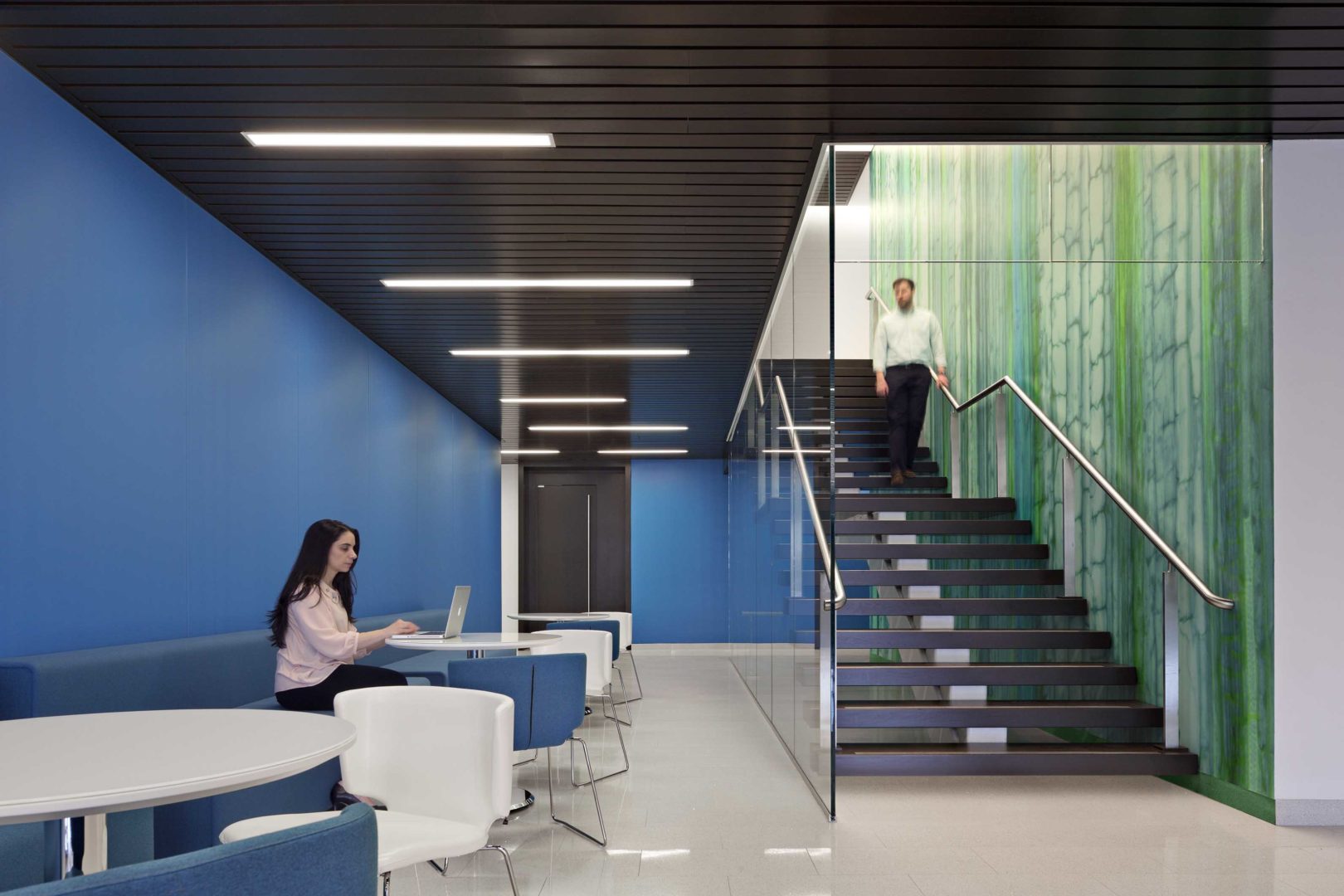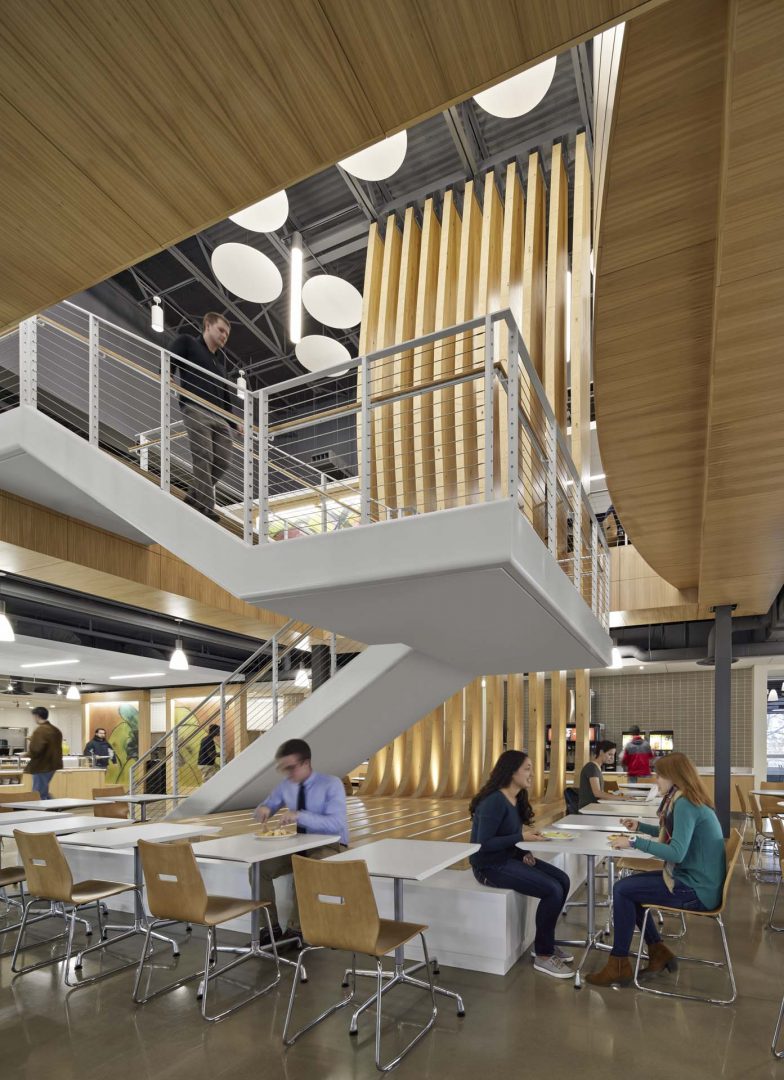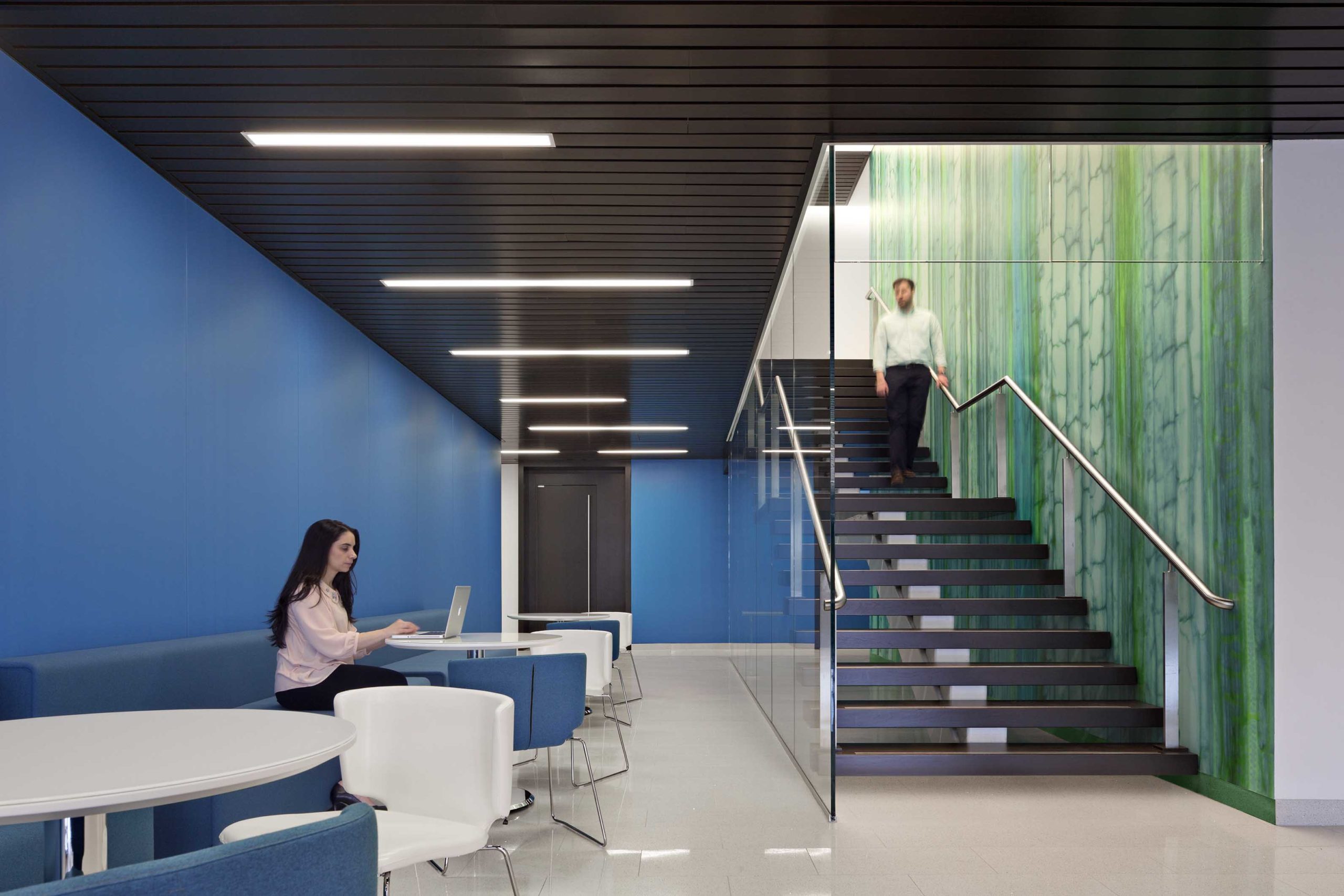
Xylem headquarters – Rye Brook, New York
As a WELL certified professional focused on elements that make our spaces healthier—Air, Water, Nourishment, Light, Fitness, Comfort and Mind—I am painfully aware of the effects of sitting too long behind a desk.
Do you know that sitting burns 50 fewer calories per hour than standing? Or that sitting more than three hours at an office desk per day can lower your life expectancy by two years? In a college setting, the “freshman 15” weight gain is reflective of too much time sitting with books. (Not that they shouldn’t study, they should just move more.)
Simple adjustments in the office, or campus space, can yield better results. For example:
- Implement walking meetings. If your meeting doesn’t require a desk or computer GET UP! Take your meeting outside and go for a walk around the block, park or pond! If it is too cold or raining, take your discussion for a lap around the hallway.
- Encourage employees and coworkers to get up and move instead of sitting at their desks all day.
- Incentivize the stair, rather than the elevator.
Even better is to incorporate fitness into your office and campus design. For example:
- Celebrate the stair! Don’t hide stairwells behind elevator banks. Locate them within 25 feet of the entrance. Provide signage at all elevator banks to encourage employees and students to walk, rather than ride.
- Provide art, music, daylight or views to the outside or interior of the building at the stairs and along pathways to the stairs. When you incorporate these stimulants, you are providing an aesthetically pleasing experience that positively affects peoples’ moods.
- Centrally locate work cafés and conference suites to encourage your employees to get up from their desks. Locate campus dining facilities on a prominent walking path. Exercise is known to increase the release of serotonin, which also helps to elevate an individual’s mood.
We are always looking for opportunities to incorporate wellness into our designs. Two great examples are the XYLEM headquarters in Rye Brook, NY, where a central stair is the centerpiece for this Fortune 500 global water technology company.
At the University of Connecticut, the renovated Putnam Refectory unites upper and lower level spaces with an iconic sculptural stair, encouraging students to move about.
Stay tuned for more posts on how mood and mind can affect design outcomes.

University of Connecticut Putnam Refectory – Storrs, Connecticut







